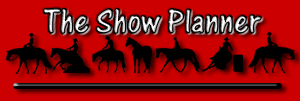INTERPRETING FEED TAGS
By Eleanor Richards
Copyright © 2004
For the next several months we are going to examine feed tags. Why do manufacturers put them on the bags? What does the analysis mean? Is the information important to you and your horse?
Almost everything in this country is regulated…and that includes feed for animals. The regulations and feed laws developed by The Association of American Feed Control Officials try to insure the product you are purchasing is safe, consistent, and meet the nutritional statements the manufacturer is claiming for that product.
Each state is responsible for insuring feed manufacturers comply with the commercial feed laws mandated by the AAFCO. State inspectors periodically make calls on local businesses and manufacturers. The inspection may include pulling random tests of feeds. These tests are then compared to the feed tag to insure the information being provided to the consumer is correct.
Most state feed laws require the following information be stated on the product.
1. Net weight
2. Product name
3. Name and address of the manufacturer
4. Guaranteed analysis of the feed
A. Minimum percentage of crude protein
B. Minimum percentage of crude fat
C. Maximum percentage of crude fiber
D. Minimum and maximum percentage of calcium
E. Minimum percentage of phosphorus
F. Minimum copper in parts per million (ppm)
G. Minimum zinc in parts per million (ppm)
H. Minimum vitamin A (not naturally occurring in the feed) in international units per pound
(I.U.)
5. Feeding directions
6. Any precautionary statements that are necessary for the safe
feeding of the product.
Other information may be listed at the company's discretion. Many premium feeds list other added minerals and vitamins. Notice the mineral, selenium, is not required to be listed on the feed tag. Knowing selenium has been added to the feed is critical, due to the deficiencies in some areas of the country.
In order to make the reading of this information easier it would be a good idea to locate a feed tag, so you can follow along. The tag is usually sewn on the bottom of the bag. Here is a hint about pulling the string to release the tag without tearing it:
Step 1: Set the bag on end so the tag is up - facing you. You will be standing with the bag in a vertical position, probably with a leg on either side.
Step 2: Notice the string is different on either side of the seam. On one side it is double and on the opposite side it is single. Remember this phrase:
"Double string on the left - start at the top."
Step 3: Turn the bag so the double string is on your left. Go to the top of the bag. There should be several inches of excess string hanging from the end. Cut this excess close to the bag. Now start to un-ravel it. You will notice two pieces of string pull apart and the bag will open. The first time you do this it might take some experimentation, but it will work.
Some manufacturers have started printing the feed tag on the bag. But, every feed must have the information mandated by the AAFCO attached to it somewhere. If you purchase feed by bulk your supplier must provide a tag with every delivery.
Now that you have your tag, look at the top. The name of the feed will be stated. Generally right below the name will be the purpose for which the feed is intended. For example: Nutritionally balanced for the special needs of growing foals. You would not feed this product to a senior horse.

